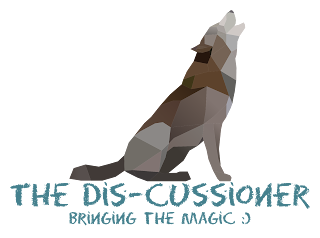In the Parks Series - Bijitsu-kan Gallery: Japan's Cute Kawaii Culture Discussed!
I’m a child of the 90’s. For those of you who are like me, you most likely spent your waking hours watching Sailor Moon and playing Pokémon on your Gameboy, along with collecting the trading cards and watching Pikachu get up to his old antics yet again!
If this sounds familiar and tugs at your heartstrings, you have Japanese Kawaii Culture to thank for it! Kawaii, meaning “loveable”, “ cute”, or “adorable”, began after the effects of World War II and especially gained momentum among Japanese schoolgirls in the 1970’s (although its roots do come from ancient Shinto traditions). It was a means of escape from the dull and dreary to the cute and cheery!
Disney, being the definition of cute, of course had to get in on the action. With its Japan pavilion located in the World Showcase of Epcot, it was time to get this show in the road. Bijitsu-kan (which literally means “art gallery”) Gallery was born in 2015, and let me tell you: cute is an understatement.
 |
| The entrance to the Kawaii Museum in the Japanese pavilion. |
We love cute things in our home. We keep a variety of stuffed animals around the house, along with various items based around Hello Kitty, Pikachu, Totoro, and of course, all things Disney whimsy!
 |
| A Chibi Beast home is a happy home. |
Can you tell I’m enthused about this exhibit? Anyways, this museum celebrates Kawaii culture to the extreme. Take a look and you will see what I mean! I won’t be going over every mascot or exhibit in detail, but I will definitely discuss some of the more notable ones below.
 |
 |
| More cute mascots! |
Of course, everyone knows who Pikachu is (if you’ve been living under a rock, he’s the yellow mouse with the lightning bolt tail in the middle). Pokémon was only my second foray into the world of Kawaii and anime. Prior to this, I was busy alongside Sailor Moon fighting evil by moonlight and winning love by daylight (just kidding, I was like, five). Pikachu is what really got me into Pokémon in all honesty. He was just so cute - you couldn’t help but want to beat the bad guys by levelling up on Pokémon Yellow and watch him get into shenanigans with Ash every week on TV.
Above Pikachu is a black bear named Kumamon, the mascot of Kumamoto Prefecture in the Kyushu region of Japan. He was created by the government, so yes, even they get down with Kawaii! He is so popular that he was even voted Japan’s #1 mascot of 2011! He has earned billions of dollars in revenue for Japan, so cuteness appears to be a solid business strategy.
The brown, furry monster beneath Kumamon is Domo-kun. He is the mascot of the NKH broadcasting station. He was first aired in a series of stop-motion sketches in 1998 to celebrate the station’s 10th anniversary.
 |
Above Hello Kitty is a white rabbit with leeks on his head named Fukka-chan. He is another yurukyara (A.K.A a mascot to promote a city or prefecture, much like Kumamon). He is the mascot of Fukaya City. He wears both leeks and tulips, which are symbols of Fukaya City. And he is, of course, just adorable.
On the middle platform is Terepanda (“lazy panda”). Terepanda literally moves by rolling over, and is probably lazy enough to be friends and co-squat with Rilakkuma. In 1998, products featuring the mascot were quite successful due to a financial crisis that occurred in 1997. It was believed that many people were sympathetic to a worn-out panda character from the reality of impending layoffs. The cuteness of Terepanda helped to buffer the harsh realities that were being faced by Japanese workers and helped them cope with uncertainty during this unstable economic time.
 |
 |


In these exhibits, Kawaii has been taken to the extreme. We see a Totoro-themed bathroom and a kitchen that has a Pikachu kettle of all things. It’s amazing how done-up you can make your spaces if you try.
 |
 |
| Gwen Stefani would be proud. |
You know the song “Rich Girl” by Gwen Stefani? I was a teen when the song came out so I sure do. She and her Harajuku Girls back-up dancers lit up the town and lit up my life. The above is the literal definition of Harajuku fashion, with artsy, bright, and cheery accessories worn. This neighbourhood in Tokyo is renowned for its fashion choices and cosplay wares.
 |
Overall, I really enjoyed Bijitsu-kan Gallery. This is always a must-see on our trips and I will tell you that I’m planning to visit again when we go to Disney in 2019!
Have you visited this gallery? Love it or leave it? Comment and subscribe :)

Let me book the magic for you! Fill in this form for a FREE quote and/or click here for my contact information!





Comments
Post a Comment